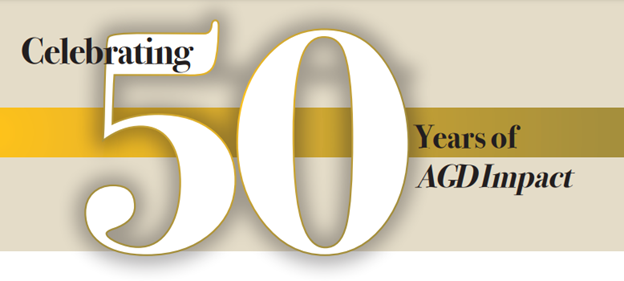Celebrating 50 Years of AGD Impact

In 1973, AGD created a newsletter to inform members about the socioeconomic and political advances in dentistry, but it wasn’t until four years later that the title of AGD Impact was adopted.
Vol. 1, no. 1, of the 1973 newsletter contained AGD President Duncan H. Wallace’s protest of dentistry’s inclusion in Phase III wage and price controls during the Nixon administration. Looking back, many of the same issues general dentists experience today, we also faced back then. From 1960 to 1971, dental fees rose at levels comparable to the cost-of-living index, but less than the national rise in wages. Dental practices absorbed roughly 20% of the increased expenses related to the cost of doing business. But is the dental profession a “normal” business? Certainly many aspects are relatable to the store or gas station down the street, but with one major exception — we are in the healthcare business. Treating patients properly with modern techniques and technology can be prohibitively expensive. How can our costs be reduced without reducing the standard of care our patients have learned to appreciate? Sound familiar?
By 1978, AGD and the American Dental Association (ADA) proposed the creation of a “National Commission on Continuing Dental Education,” which would lay the foundation for both AGD’s Program Approval for Continuing Education (PACE) and the ADA’s Continuing Education Recognition Program (CERP). Prior to this time, much effort was placed on protecting dentists from federal and state regulations. Advocacy was at the forefront. The organization really started to take shape. By 1980, a long-range planning council was formed.
In 1984, legislative, social and professional debates were made throughout AGD Impact’s pages, discussing new regulations and denturism and mentioning state-by-state synopses of what areas of the country thought critical to address. The 1990s saw an influx of equipment reviews and trends of the decade, which was an innovative time in the profession. New technology like clear aligners and digital dentistry helped take the fear out of going to the dentist for many patients. Certainly, dentistry was transitioning into a competitive business — making the public aware of our abilities became more focused. Managed care issues saw light in the mid to later part of the decade. The first editorial by new AGD Editor Roger D. Winland, DDS, MS, MAGD, focused on managed care and the valuable role of the hygienist in our practices. Dry mouth concerns as well as comparisons of impression materials were discussed.
From the start, AGD Impact and its newsletter predecessor focused on the mission of our organization. New challenges have arisen, but so many of the problems and complications we face as an organization and as member dentists have yet to be resolved and are continually debated within these pages.
For any publication to survive 50 years, it takes a lot of dedication. Two AGD editors have been rocks who have anchored the publication through 46 of AGD Impact’s 50 years — William W. Howard, DMD, and Winland. These two have ensured the magazine’s commitment to objectively covering the most relevant topics in the world of dentistry. They’ve been supported by dozens of AGD staff members throughout the years who have also dedicated themselves to the publication’s mission and to meeting a consistently high bar for five decades.
Supporting a print publication for 50 years also says something about AGD as an organization and our mission. We’ve heard both anecdotally and through our readership surveys that our members enjoy print products. Print has a type of permanence that digital just can’t match. Print makes a bold statement that every piece of content in each issue has been through a rigorous review and that staff believes it will stand the test of time. We should be proud as AGD members that our organization believes in creating and distributing such objective, journalistically sound content. AGD Impact provides a valuable service to the profession. It helps keep us current on topics we may be unaware of, which can individually affect us immensely.
Just as your patients can trust you to deliver high-quality oral care, you can depend on AGD Impact to deliver high-quality information. We’re looking forward to the next 50 years.
